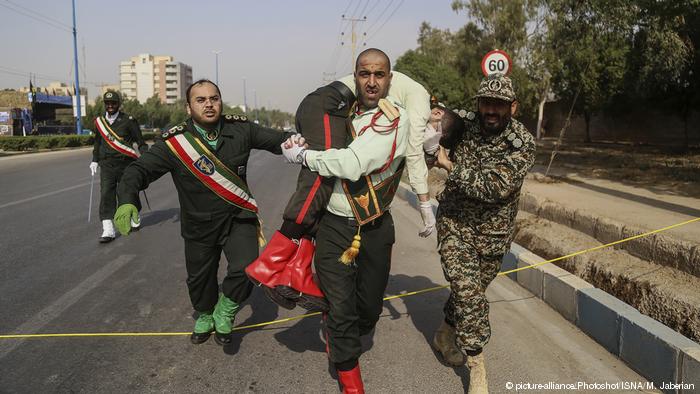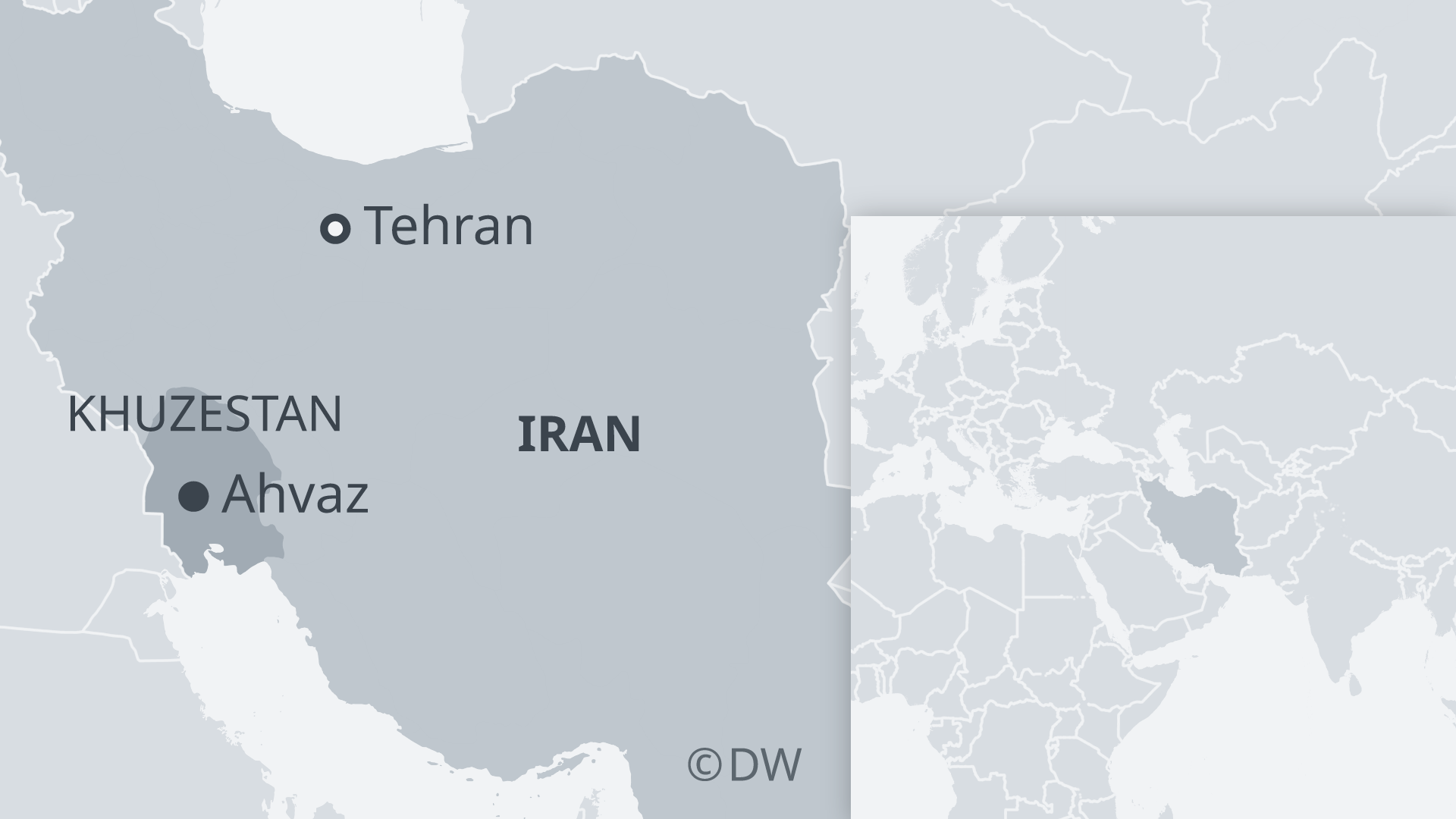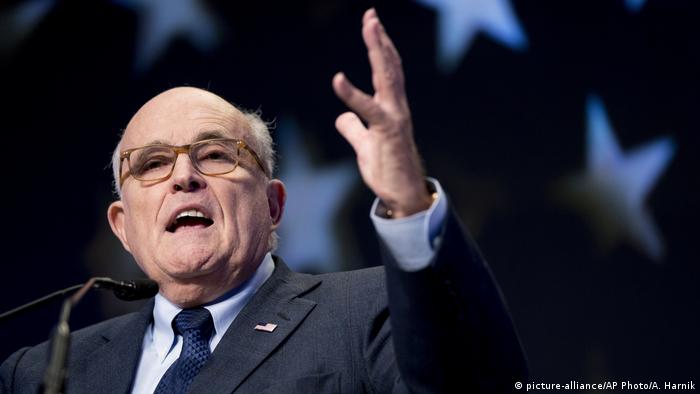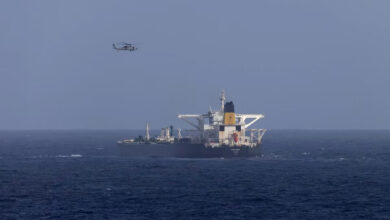
A deadly attack on an Iranian military parade demonstrates the country is internally vulnerable. Analysts say the regime is likely to respond with a tougher line at home and in the wider region.
A deadly attack on an Iranian military parade may strengthen hard-liners in the country and send already heightened tensions across the Middle East soaring, as Tehran points its finger at the United States and its Gulf Arab allies.
The rare attack claimed by Arab separatists killed 12 Revolutionary Guard (IRGC) members and 13 others in the southwestern city of Ahvaz, capital of oil-rich Khuzestan province, which is home to an Arab minority. It was the deadliest attack in the country in nearly a decade.
Supreme Leader Ayatollah Ali Khamenei blamed “mercenary terrorists” who carried out a crime in “continuation of the conspiracies by the US-backed regimes in the region,” while the IRGC under his command vowed “deadly and unforgiving revenge,” if need be abroad.
Iran did not name a particular Arab country, but the accusations appeared to be aimed at regional rivals Saudi Arabia, the United Arab Emirates and Bahrain.
“The small puppet countries in the region are backed by America, and the United States is provoking them and giving them the necessary capabilities,” President Hassan Rouhani said.
President under increased pressure
Rouhani is considered a moderate who tried to reduce the IRGC’s sway over politics and the economy in the wake of the 2015 nuclear deal. The president also backed this deal vociferously at home.
However, amid internal power struggles, he has been forced to take a harder stance since US President Donald Trump withdrew from the nuclear deal and imposed sanctions earlier this year. Trump’s move put pressure on the Iranian economy and government simultaneously.
Analysts say that the government may try to instrumentalize the attack — using the specter of internal and external threats to divert domestic attention from serious social and economic issues.
“Propagating the siege mentality could help change the subject domestically from complaints over mounting economic troubles to a nationalistic rallying round the flag to preserve the country’s territorial integrity, which inherently requires a strong central government,” said Ali Vaez, the director of the Iran project at the International Crisis Group.
Proxy conflicts to intensify?
The attack occurred against the backdrop of Shiite Iran and Sunni Saudi Arabia being locked in multiple proxy struggles across the Middle East, from Yemen and Lebanon to Syria and Iraq.

Analysts say that Iran is unlikely to retaliate directly. Rather, it may use one of its many proxies across the region, including Houthi rebels in Yemen, to strike at a time and place of its choosing.
“If Iran recognizes this as a trap, it is unlikely to respond militarily in a direct way. It can intensify its support for the Houthis, but will stop short of targeting Saudi Arabia or the UAE directly,” said Trita Parsi, the former president of the National Iranian American Council.
“If less restrained voices in Tehran win the debate, however, Iran may take more direct action against Riyadh and Abu Dhabi. This could include harassing their ships in the Persian Gulf, but also pressing the Houthis to strike key targets in the UAE with missiles. The latter would be a major escalation of the Yemen crisis that could lead to a significant enlarging of the war,” he said.
Several sectarian splinter groups
The attack in Ahvaz illustrates that Iran may be vulnerable to ethnic and sectarian-driven turmoil, which is exacerbated by economic mismanagement and political repression.
Saturday’s attack was claimed by the Ahvaz National Resistance, an Arab group that seeks independence for Khuzestan province. The relatively obscure group, and its umbrella organization, has carried out small attacks in the past, mostly on oil infrastructure.

It is one of several ethnic separatist movements in Iran, including the Kurds in the west of the country and the Baloch people in the east. After years of relative quiet, Kurdish opposition groups have battled with government forces on the border area with Iraq in recent months.
In an unprecedented move in early September, the IRGC used drone surveillance and intelligence to target the headquarters of the Kurdish Democratic Part of Iran (KDP-I) opposition group in Iraqi Kurdistan with missiles, killing at least a dozen people including leadership figures. The head of the KDP-I and another smaller Iranian Kurdish group were in Washington in June to discuss possible cooperation.
Ethnic-based militant groups have been emboldened by political and economic pressure on the Iranian government since the US withdrew from the nuclear deal, said Nader Uskowi, the president of Sagewood Consulting and Nonresident Senior Fellow at the Atlantic Council think tank.
“They see the Iranian government as being weakened and they are going to expand their activities against the government,” he said. “They could do this with or without foreign support. They don’t need foreign backing for particular action.”
State to beef up IRGC?
Vaez from the International Crisis Group said the assault in Ahvaz may strengthen the hand of the IRGC in its domestic and regional activities.
The IRGC, Vaez said, is “likely to receive more funding and support to crack down on separatist groups and rectify its security breaches.”
After years of calling for regime change in Iran, Bolton now says that is not American policy. Few believe him.
“It is also likely to have more maneuvering space to flex its muscles in the region, by either pushing back against Iranian armed dissidents – as was demonstrated by the recent missile attacks on the Kurdish Democratic Part of Iran in Iraqi Kurdistan – to imposing a cost to US and its allies in the region by indirectly targeting their assets throughout the region.”
Uskowi warned that if the government cracks down too much, there is a danger of escalating conflicts with ethnic groups.
“That is not something the government can afford at a time when it faces serious political and economic issues,” he said.
US, Saudi Arabia seeking Iranian instability
It is unclear what, if any, connection the United States, the Gulf Arab monarchies or Israel have to Arab separatists in Khuzestan or other ethnic groups in Iran. So far, no evidence has been presented. However, there are plenty of reasons for Tehran to believe outside powers seek to support internal opposition in Iran as part of a wider effort to weaken and destabilize the country.
Last year, Saudi Crown Prince Mohammad Bin Salman ruled out any rapprochement and vowed to take the fight inside Iran. “We won’t wait for the battle to be in Saudi Arabia,” he said in a wide-ranging interview. “Instead, we will work so that the battle is for them in Iran, not in Saudi Arabia.”
In a memo written last year before he became US national security adviser, John Bolton argued that Washington should “provide assistance to Balochis, Khuzestan Arabs, Kurds, and others.”
On the same day of the attack in Ahvaz, Trump’s attorney, Rudy Giuliani, told a summit in New York organized by the People’s Mujahedin of Iran (MEK) that US policies were weakening Iran and would lead to a revolution and regime change. Giuliani, Bolton and other former and current US officials are or were on the payroll of the MEK, which was removed from the US terrorism list in 2012.
Formally, the Trump administration says it does not seek regime change.
General Assembly showdown next
The attack comes as Iran and the United States are set for a diplomatic confrontation this week at the UN General Assembly, where President Donald Trump will address Iran’s “destabilizing aggression and sponsorship of terrorism.”
Iran, meanwhile, will seek to rally international support against the United States for unilaterally violating the JCPOA nuclear deal and is likely to try to leverage the attack in Ahvaz to show it is a victim of terrorism.






